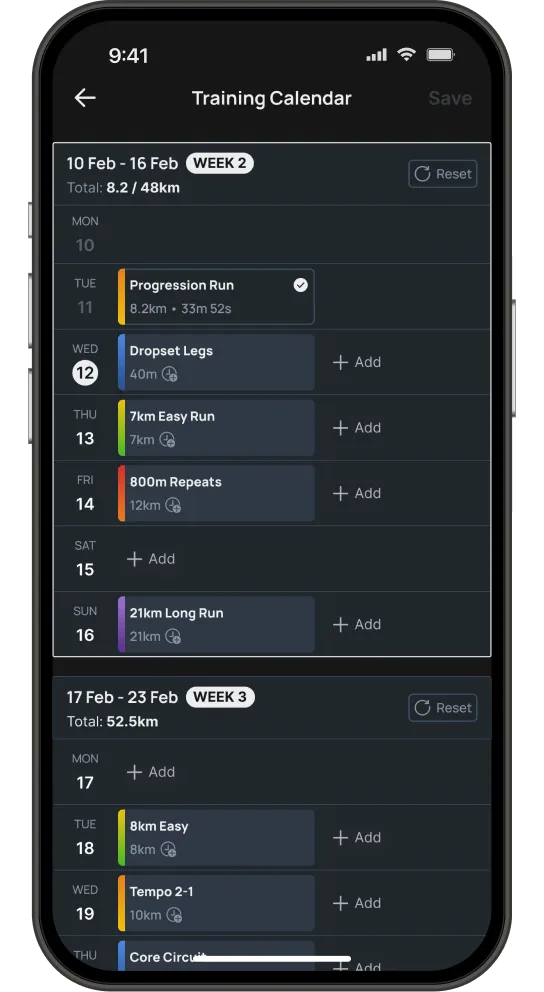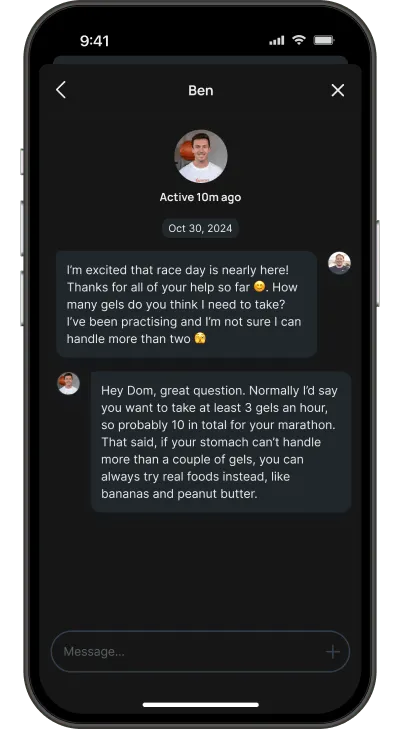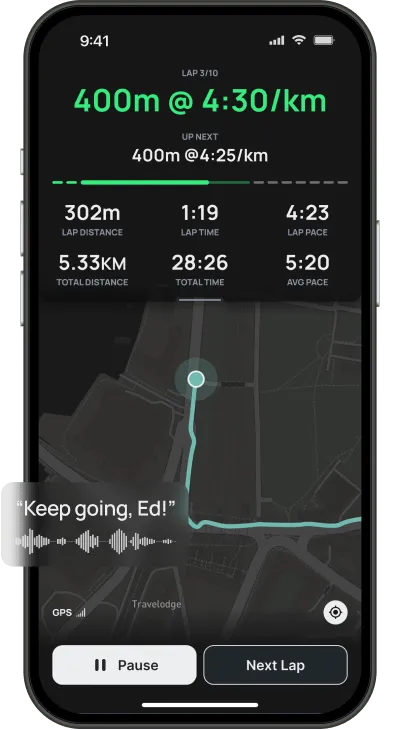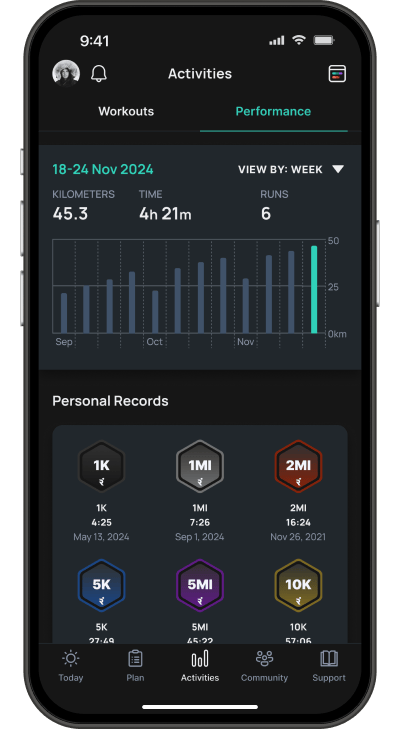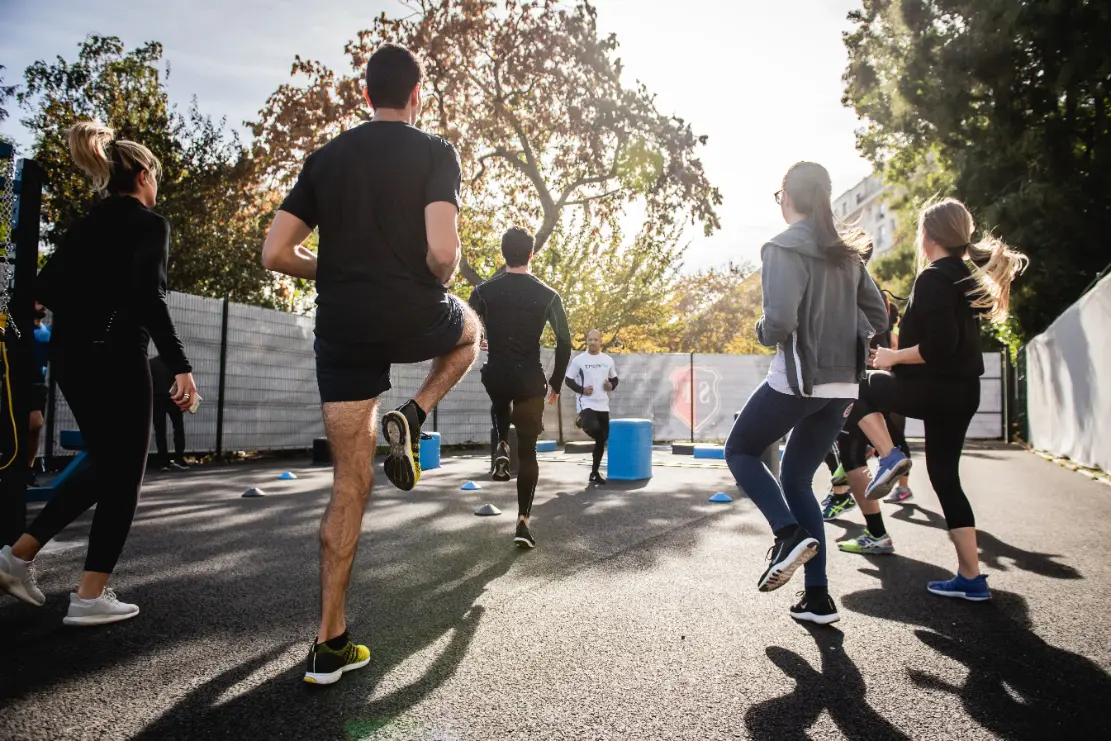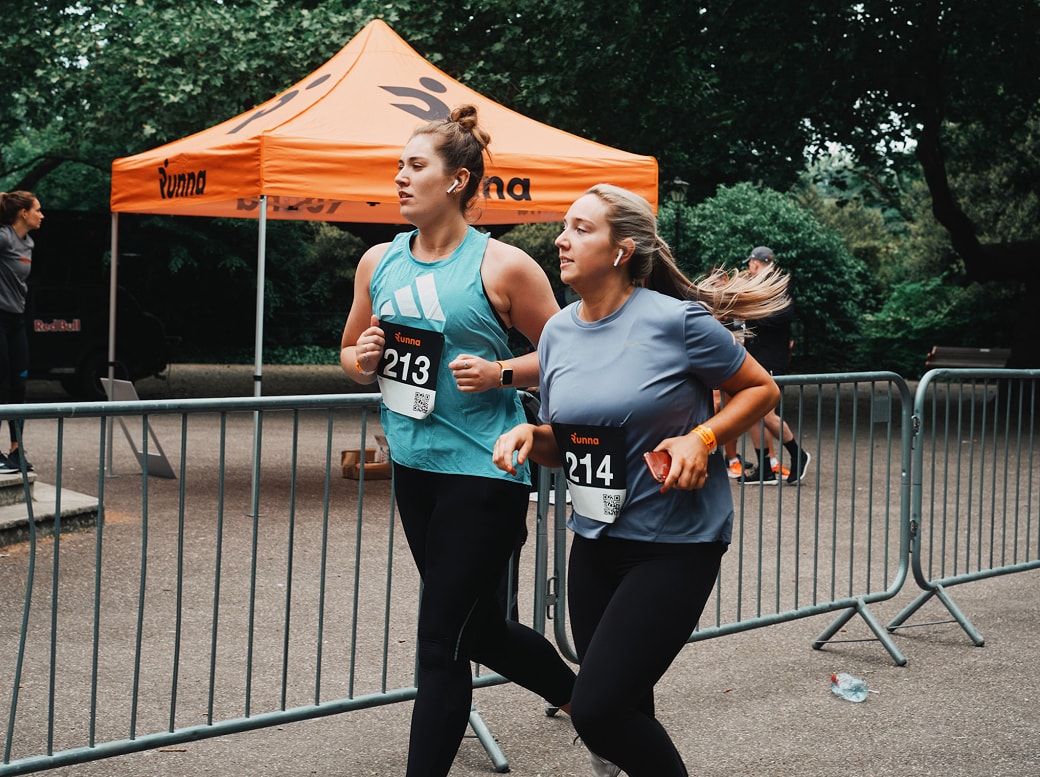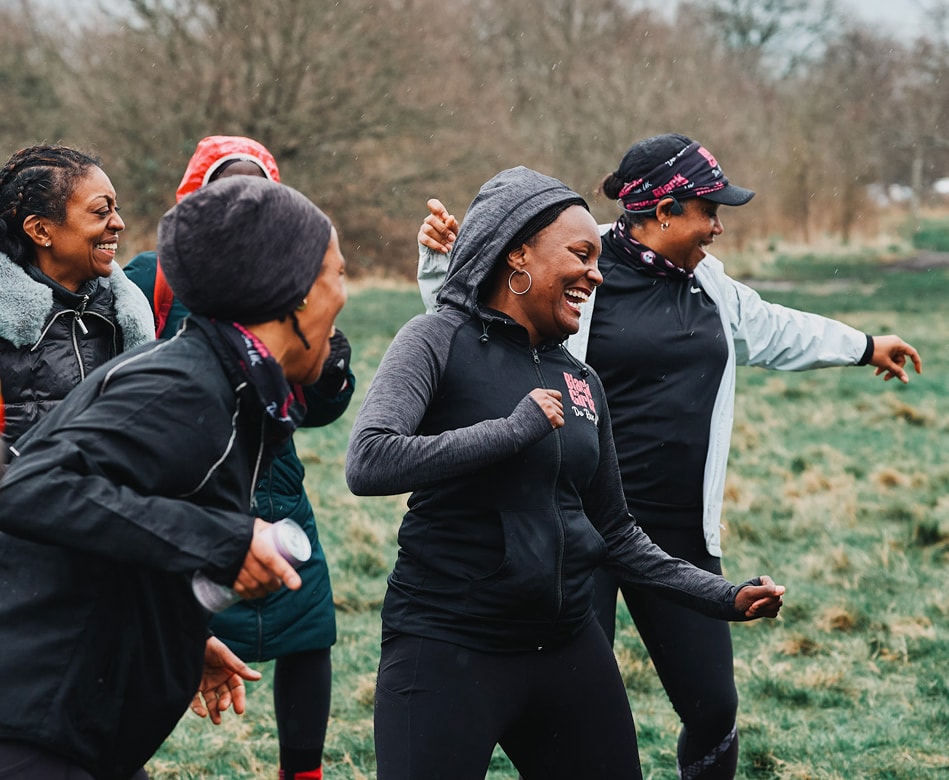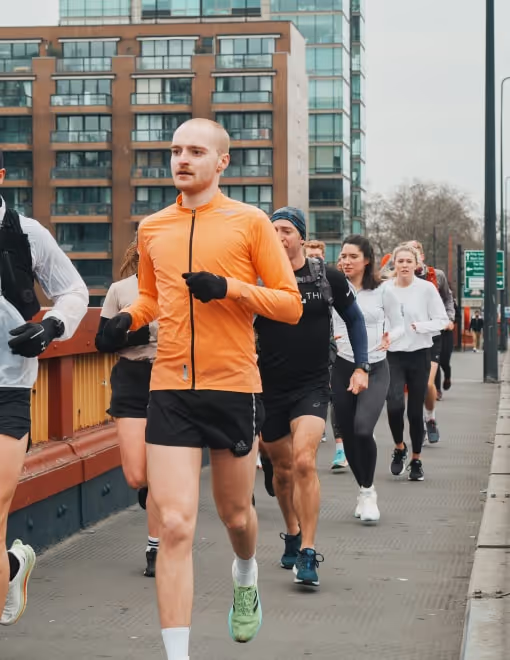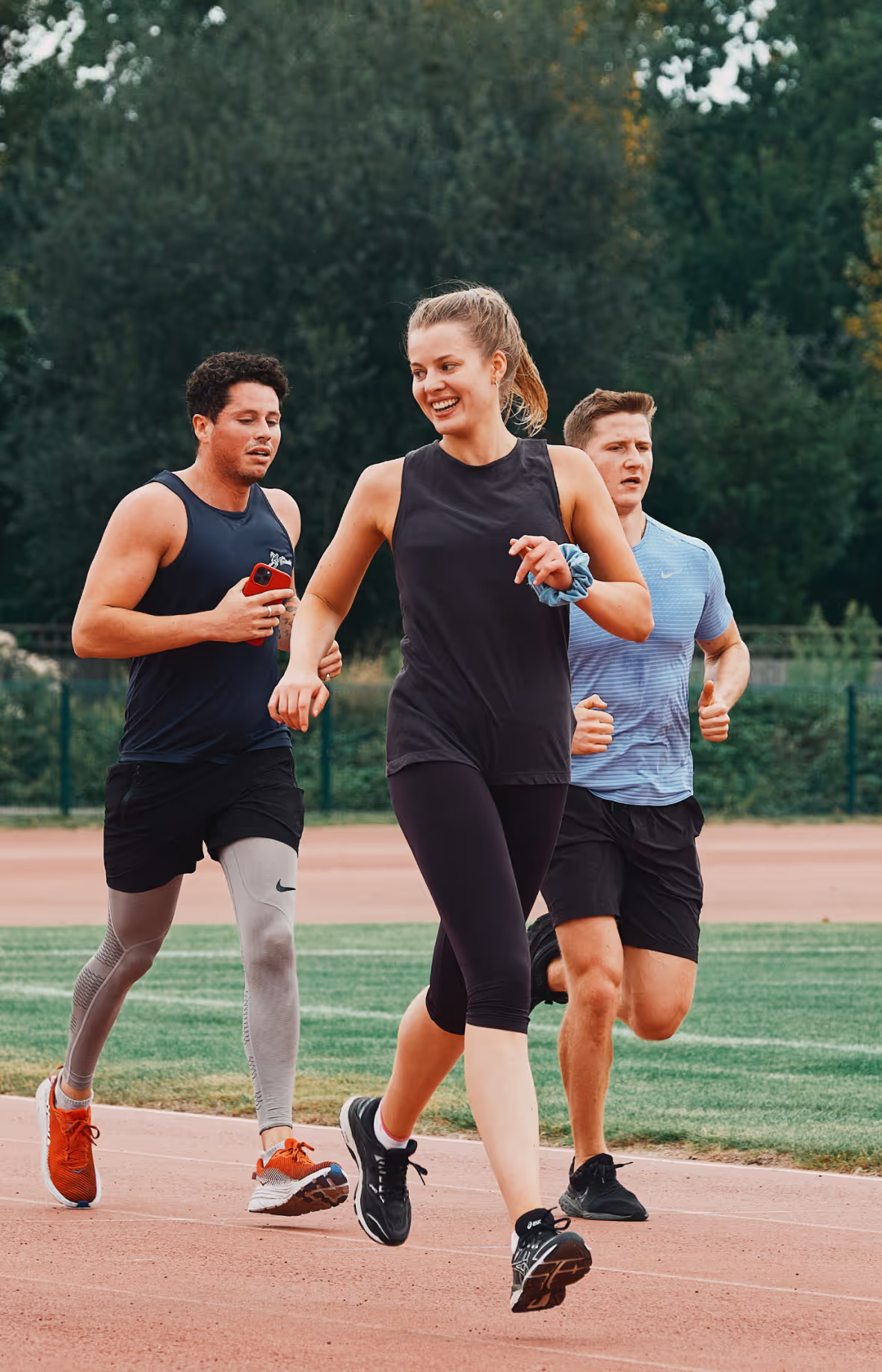Half marathon training plan
We understand the thrill of crossing the finish line, the satisfying burn of a workout well done, and the exhilaration that comes from constantly pushing your limits. With the right half marathon training plan, you can achieve all that – and more.
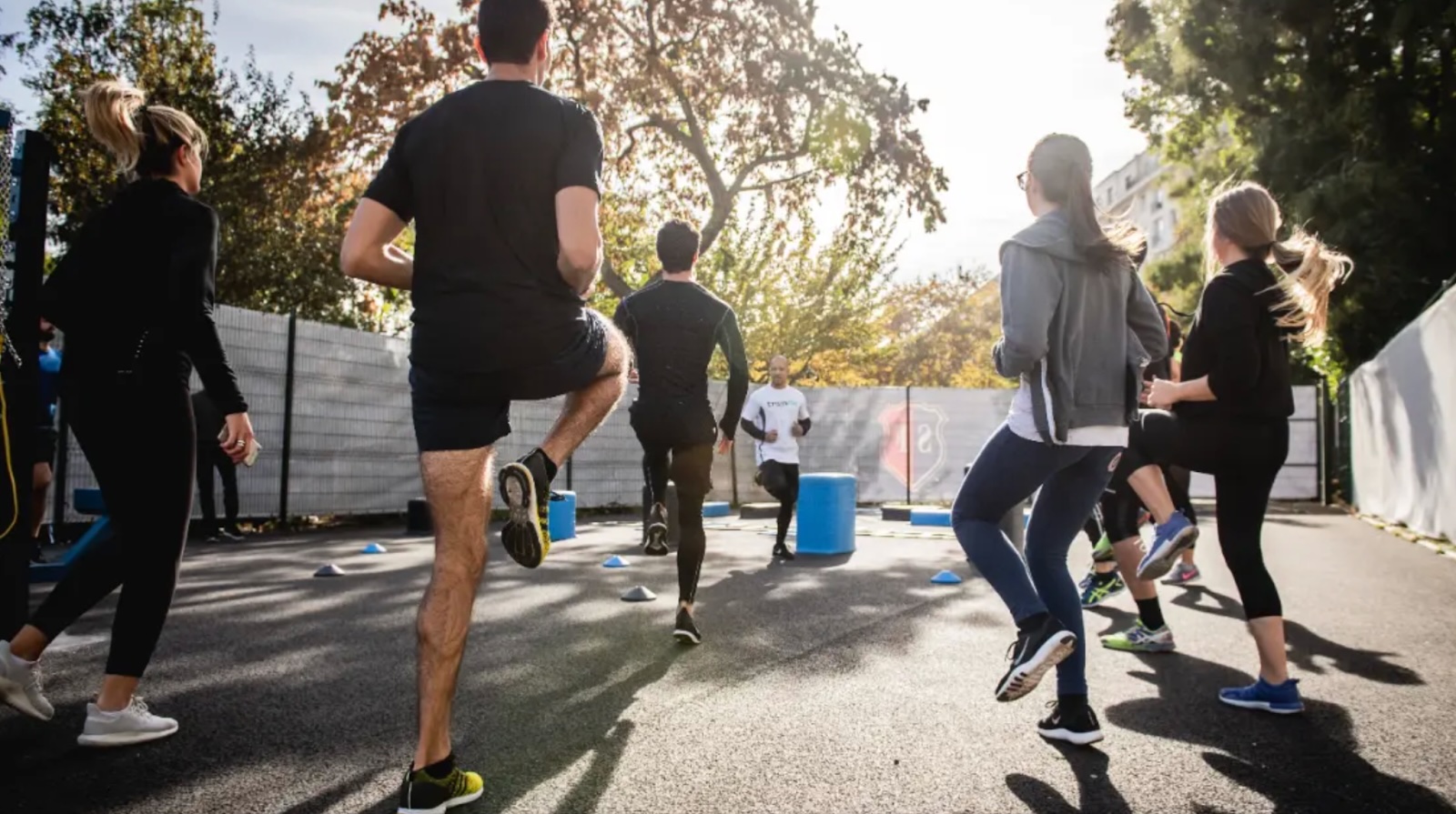
How to train for a half marathon
A half marathon (or a half-marathon, as some people like to call it!) is a running event that’s exactly half the distance of a marathon: 21.0975 kilometers or 13 miles 192.5 yards.
It’s a distance that’s achievable for most runners – if you can run a 10k, you can definitely prepare for a half marathon – but still remains a challenging one, requiring a good training program and steady commitment. Many runners use it as a stepping stone towards longer distances, while others see it as an end goal and simply work on improving their personal best.
Perhaps one of the hardest parts of training is staying consistent and holding yourself accountable. To achieve this, you need to develop a weekly running routine and get used to lacing up for a run two, three, or more times a week – plus, you can also sign up for a half marathon race: Having a specific deadline can really help you stay on track.
The best way to do all this is to use a dedicated running app like Runna to create a personalized half marathon running plan that sets out all sessions for you and adjusts your mileage to your goals.

Why choose our half marathon training plan?
Whatever your current or desired fitness levels, we’ll give you everything you need to reach your goals.
How to get started
Runna is simple, intuitive, and designed for runners of all levels. Whether you're training for your first half or smashing a PR, you'll be guided every step of the way.
Choose your plan
After you create your account, select a race you're training for. Otherwise, pick the half marathon training plan.
Download the app
Download the app, pop in your login details and your free training plan will be at your fingertips.
Run, run, run!
Getting started is as easy as tapping ‘Go’, and we’ll be there to guide you every step of the way.
Hit that goal
Follow your plan and within no time you'll be crossing that finish line. Together we’ll get there.
Workouts explained
Workouts can be difficult enough without having to understand all the technical jargon. We've broken it down here so you can go into each run confident you know what you're doing.
Tips for your half marathon training plan
These expert-backed tips will help you train smarter, avoid injury, and stay motivated. From pacing and recovery to gear and mindset, discover just a small snippet of all the tips, nutrition and coaching advice you'll have at your fingertips with a Runna training plan.
Nutrition
Running is only one part of the equation. To get faster and stronger at your half marathon, you'll also need to take care of your nutrition, i.e. properly fuel your training and recovery and make healthy choices on a daily basis.
To optimize your running performance, you need to:
- Keep your protein high to help with muscle recovery
- Take on plenty of carbs before your tougher sessions to replenish your glycogen stores
If you’re looking to step up your speed or distance, you might want to give caffeine a try.
Now that you’ve loaded up your glycogen stores, you should keep them topped up with one last high-carb meal on the day of your half marathon race. Aim to eat it 3 to 4 hours before you start running – this way, you’re allowing your body enough time to digest it and keep you fueled and fresh during the actual run.
Remember: Don’t try anything new on race day. Stick to tried and tested combinations that you’ve used to fuel previous training sessions.
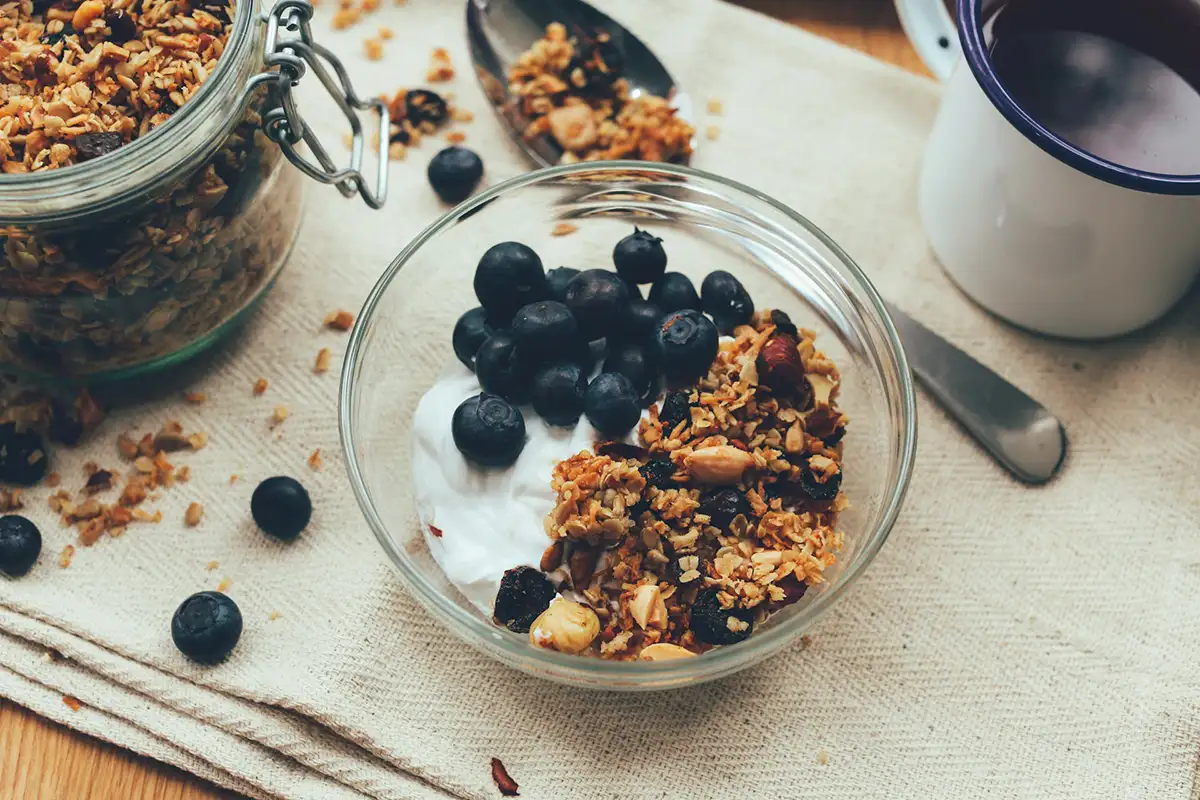
Cross-training and strength training
Adding cross-training and strength training to your half-marathon running plan helps you achieve two things: reduce injury risk and improve your performance.
Cross-training can add variety to your half marathon training and keep things interesting. There are plenty of options to choose from – cycling, elliptical, rowing, or swimming are just a few – but ultimately, what’s most important is to pick something you enjoy. This will also help you stay in shape if you get injured and get back on track quickly.
Strength training is also a great way to complement your half marathon preparation. It enables you to enhance your performance and improve your running economy by 8-12%, making those 13.1 miles a lot more manageable. Plus, it helps protect against injuries.
In fact, while running a half-marathon, your calf muscles can take up to 11 times your bodyweight in force, and your quads up to 4 times. The best way to manage those loads is to condition your body with strength training; otherwise, when your muscles start getting tired, other muscle groups such as your skeletal system will need to compensate and absorb those loads, which might lead to potential injuries.
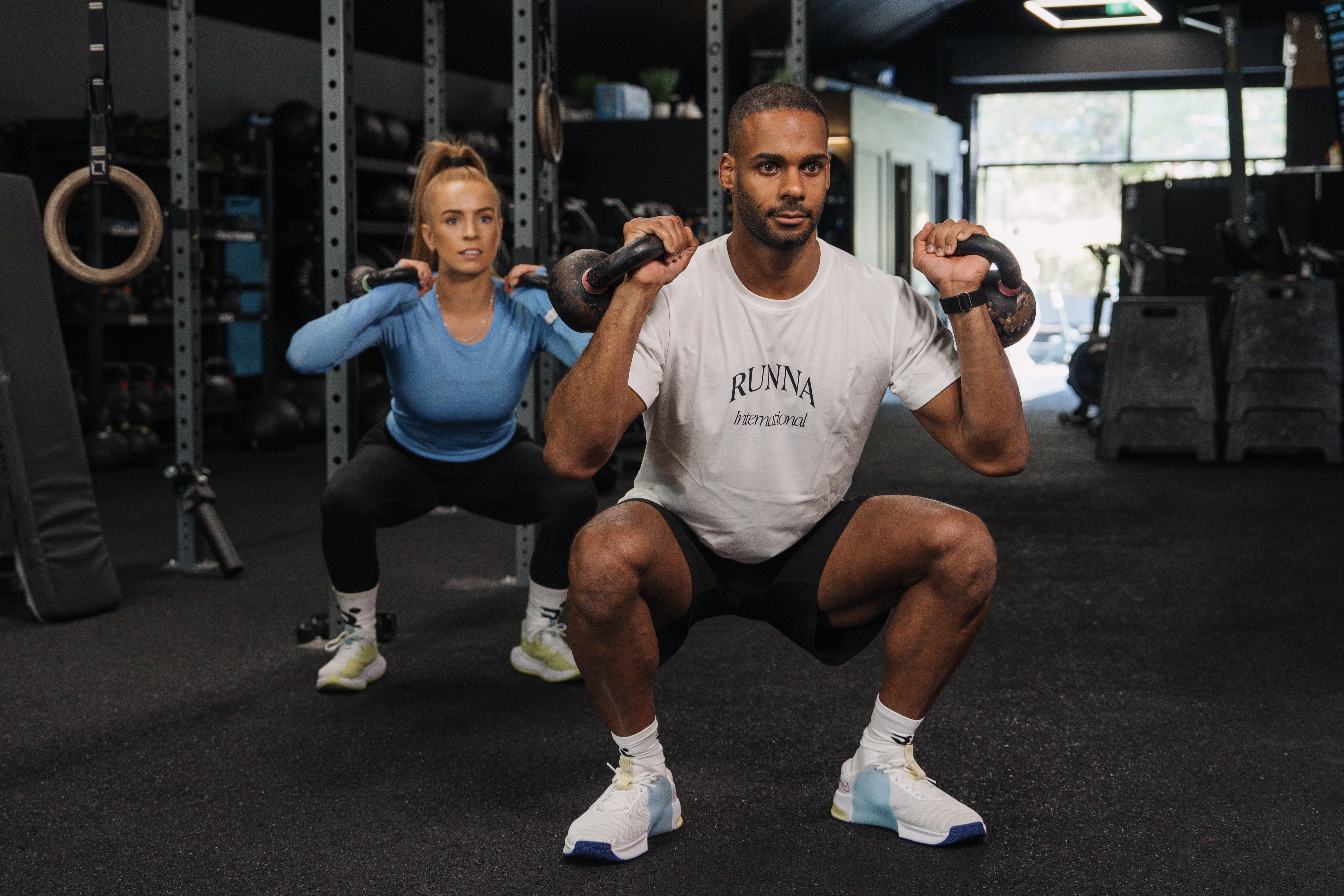
Pacing
A half-marathon is a challenging run, for which you need to prepare physically and mentally. One important aspect of your half marathon training plan is pacing, which can make all the difference between finishing strong and struggling with pain and exhaustion in the last few miles.
- The first 7 km: This is the “easy” section of your run. Here, it should be relatively easy to hold your target pace, but remember to not get ahead of yourself and run too fast – otherwise, you’ll likely regret it later in the race.
- The second 7 km: This is the “hard” section of your run. By now, your legs will start feeling tired but you should still aim to maintain your pace. If you’re holding back, you can speed up by 5 seconds per km. When you reach the 14 km mark, you’ll be ⅔ done with your race. Focus on your achievement to keep yourself motivated for the final stretch.
- The final 7 km: That’s the fun part! By now, you’ll be tired. Knowing that this is the final stretch, however, will help you maintain your pace and running form and make the final kilometers enjoyable. If you’re able to, you can increase your pace for the entire section instead of saving it for the last kilometer.
The final 500 meters: That’s your chance to reward yourself for all the hard work you've put into training and completing the race. Use this thought to push yourself to the finish line in style!
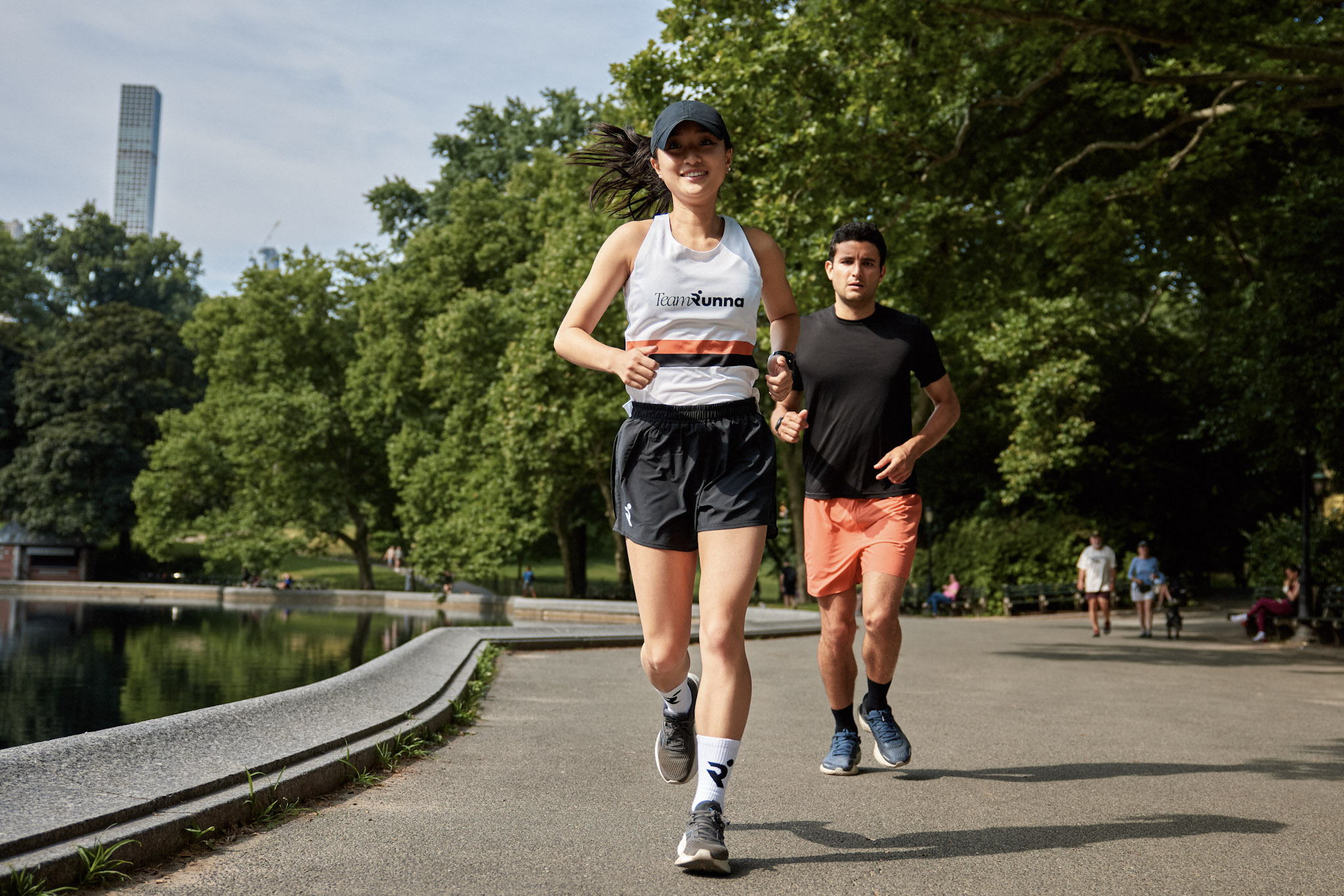
Form
Your running form is important for a few reasons. Running efficiently will:
- Protect your body from the impact with the ground as much as possible
- Reduce the energy needed to run and therefore help you run faster and stronger
- Reduce the risk of injury
How you run is something you’ve learned over a lifetime, so changing your running form might feel strange at first. Be patient and keep in mind that it’s a continuous process.
Your running pace is simply the speed at which you run. It’s usually measured in terms of time-per-distance unit, for example 8 minutes/km or 12 minutes/mile.
You can use a running watch or your phone’s GPS tracker and a running app like Runna to monitor your pace; this is helpful if you’re trying to achieve or maintain a specific pace during workouts or a race. Keeping an eye on your pace is essential once you start training for specific distances or time goals, so it’s a good idea to develop this habit right from the start.
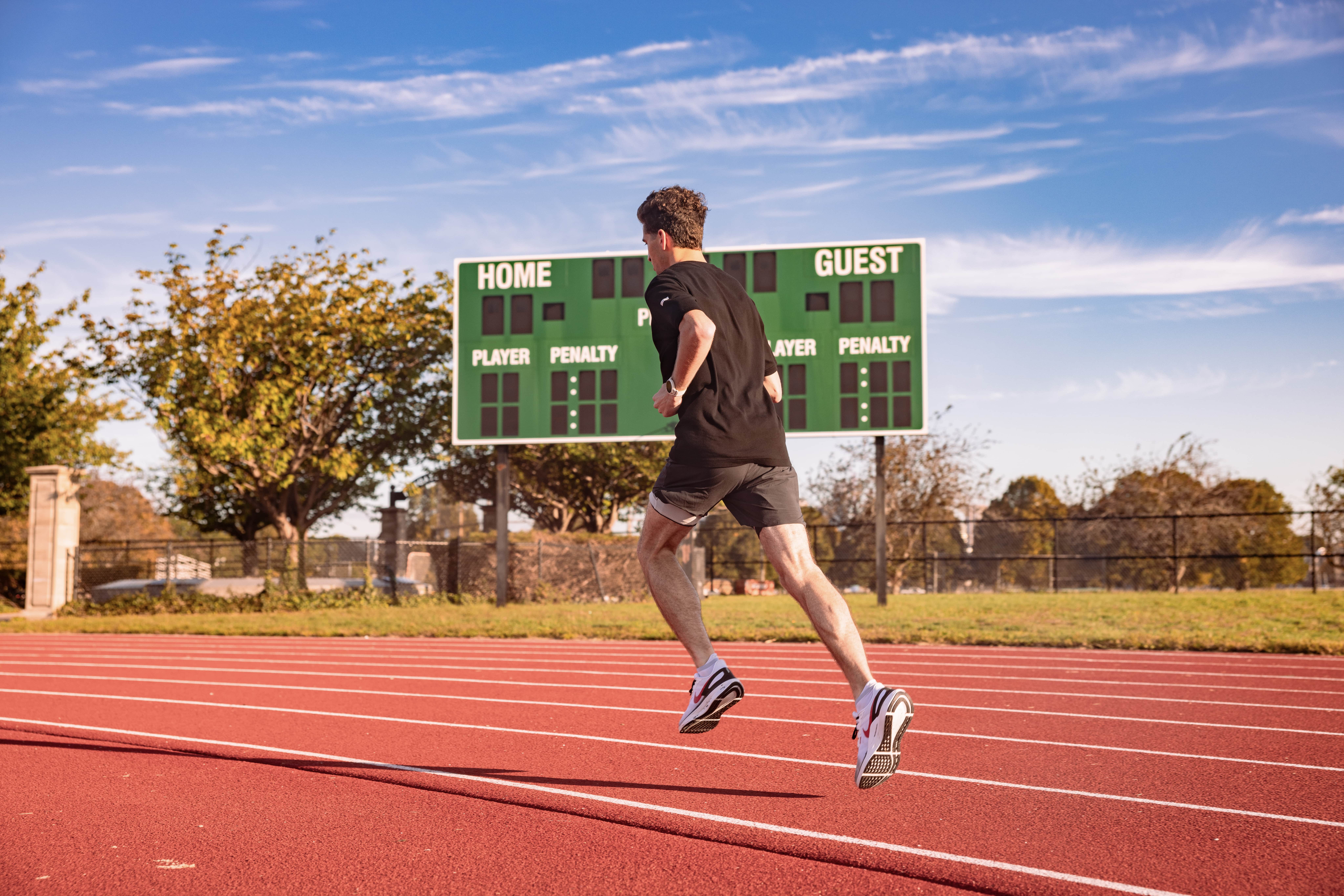
Recovery
To help your body adapt to your half marathon training program and recover properly, there are some essential things you should be doing:
- Sleep enough: Sleep is critical for recovery. Aim for consistent 8-hours nights, every night.
- Don’t forget mobility work: Incorporate mobility work into your training, such as pilates, yoga or simply stretching.
- Do sports massages: Sports massages can also help with recovery. You can even use at-home massage tools such as massage guns or a foam roller.
- Be flexible: Listen to your body throughout your half marathon training and be flexible whenever needed. Don’t hesitate to take an extra rest day or move around your weekly training sessions.
- Hydrate and fuel properly: Nutrition plays a major role in recovery. Make sure you’re refueling with a balanced mix of carbohydrates, protein, and healthy fats after each run. Staying hydrated throughout the day also supports muscle repair and energy levels.
- Include active recovery days: Not all recovery has to mean complete rest. Gentle activities like walking, swimming, or an easy bike ride can boost circulation and help flush out muscle soreness.

Gear
The gear you use during training and on race day is a key component to your comfort and performance. Here are some important considerations to make:
- Shoes: Investing in a good pair of shoes will help protect your body from the impact with the ground and make your half marathon training more comfortable. Go to a specialized shoe shop that has a treadmill in-store, so that you can test a few pairs and find the best fit.
- Clothing: Get high-quality performance fabrics that’ll keep you dry and comfortable during your run, such as polyester or nylon. Cotton retains moisture and can cause chafing, so it’s best avoided.
- Running watch or GPS tracker: Using the GPS tracker of your phone or a running watch like Garmin or COROS can help you keep an eye on your pace and the distance you’ve run, both during training and on race day. Runna integrates with Garmin, Apple Watch, Coros, and Strava to help you get most of your training plan.
- Accessories: You might also consider hydration gear and a running belt or armband to carry your phone, keys, and other essentials.
- Sun protection: Use high-SPF sunscreen, even on cloudy days.

As featured in




Stories from Runnas
FAQ: All you need to know about running a half marathon
Half marathon distance: how long is a half marathon?
A half marathon is 21.0975 kilometers or 13.1 miles, which is exactly half the distance of a marathon.
How long will it take me to prepare for a half-marathon?
The time it takes to prepare for a half-marathon will vary based on your current fitness level and previous running experience. That being said, a 12- to 16- or 20-week half marathon training plan suits most runners. In general, the more time you have to prepare, the better your performance will be.
Which half marathon training plan should I pick?
Choose a training plan based on your current fitness level, schedule, goal, and the date of your next race. Runna offers personalized half marathon training plans for runners of all levels.
What half marathon finishing time should I aim for?
Your half marathon goal time depends on your training and experience. If you’re a beginner, simply finishing your first half marathon is already a fantastic achievement. If you’re a seasoned runner with a few half marathons under your belt, you can always aim to improve your personal best.
Half marathon training and injuries: What should I do if I’m recovering from an injury?
Talk to your doctor before starting your training. Once you get a green light from them, start with slowly increasing speed and distance and varying your running sessions. A personalized half marathon training plan can help you build strength and endurance without risking another injury.
I only have 10 weeks to prepare. What should I do?
If you only have 10 weeks, set a realistic goal and make sure you get those running sessions in; increase the distance of your runs gradually but don’t forget easy runs and recovery.
A personalized training plan can help you make the most out of your limited time and adapt each training session to your goals.
Half marathon and general fitness: Do I need to do strength training to run a half marathon?
Strictly speaking, no, but it’s always a good idea to incorporate strength training into your half marathon training program to improve your performance and protect yourself from injuries.
I’m not ready for my first half marathon yet. What’s an easier goal I can aim for?
If the idea of a half marathon feels overwhelming, a shorter race like a 5K or a 10K can be an excellent starting point. If you’ve already done a few shorter races, you can use a personalized training plan to improve your personal best and overall fitness.
How can I progress from 5k to a half marathon?
Gradually increase your weekly mileage and include longer runs in your training – and don’t forget speed work, too, such as interval or tempo training sessions. With Runna, you can get a personalized 5k to a half marathon training plan to help you achieve this goal.
Inspiration

The Ultimate Half-Marathon Training Guide
Training for your first half-marathon or chasing down a new PB? Here is everything you need to know!

Pacing a Half Marathon
Pacing is an important factor of running a half marathon. Here are our top-tips to help you get that PB!

How to Fuel Your Training
Find out how to fuel and hydrate yourself before, during and after your runs with this handy overview guide.

